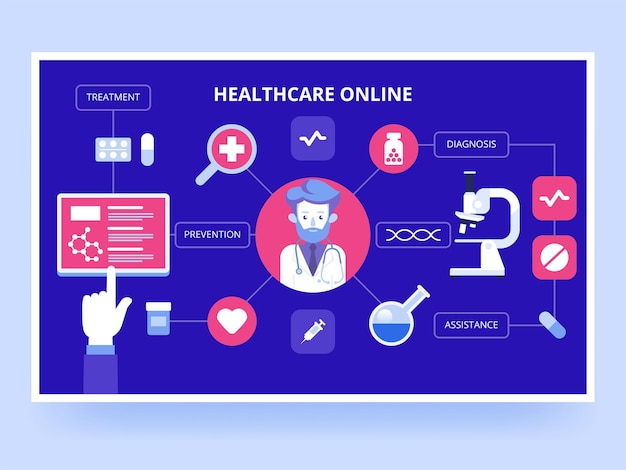The Increase of Subscription-Based Medical Care and Its Influence On Individual Treatment
As medical care evolves, the subscription-based design is getting grip, assuring to change patient care by offering predictability and ease of access. These designs, which bypass standard insurance policy, can redefine the patient-doctor dynamic, stressing preventive and customized care. As with any innovation, they present challenges, specifically worrying fair access for all socioeconomic teams. The potential for these designs to improve health care shipment raises pushing inquiries regarding their long-lasting sustainability and inclusivity. Are these subscription solutions the future of health care, or do they run the risk of leaving vulnerable populations behind? The intricacies of this change warrant a closer examination.
Comprehending Registration Health Care Versions
Understanding the principle of membership medical care models entails analyzing a transformative strategy to medical solutions that highlights price and ease of access. These versions, commonly described as direct primary care (DPC) or attendant medication, have become cutting-edge options to traditional fee-for-service health care systems. Registration healthcare allows individuals to pay a set monthly or annual charge for a specified collection of clinical solutions, which may include limitless workplace visits, routine examinations, and standard laboratory examinations, without the demand for traditional insurance policy payment.
The framework of subscription health care designs is made to streamline client care by getting rid of third-party payers and complicated invoicing codes, consequently lowering management burdens. Doctor can focus much more on client care, fostering stronger patient-provider relationships. This model additionally advertises preventative treatment by motivating routine visits, as the monetary challenge of per-visit fees is removed.
The subscription model frequently empowers healthcare providers to take care of smaller sized individual panels, enabling for more personalized care. It straightens monetary incentives with patient wellness end results, as suppliers are inspired to maintain person contentment and health. Generally, understanding registration health care models calls for acknowledging their prospective to improve exactly how care is provided and accessed.
Benefits for Providers and clients

For service providers, subscription-based designs use the chance to strengthen patient-provider connections. With a consistent profits stream, medical care specialists can commit even more time to every individual, causing an extra thorough and personalized treatment experience. This version additionally minimizes dependence over client volumes, reducing burnout and enhancing work satisfaction. The focus on precautionary care within registration strategies can lead to far better individual results and minimized long-term medical care expenses. By focusing on constant care, providers can resolve problems before they rise, eventually profiting the health care system all at once by lowering the problem on emergency and severe care solutions.
Problems and challenges
While subscription-based medical care versions existing many advantages, they likewise come with a set of challenges and concerns that have to be dealt with. This increases ethical questions concerning fair access to healthcare solutions.
Financial sustainability of subscription-based designs is one more concern. Companies should balance the set earnings from subscriptions with the variable costs of medical care services, which may rise and fall because of unexpected medical demands. This can produce pressure to restrict services or rise charges, potentially influencing client complete satisfaction and care top quality.
In addition, regulatory oversight of subscription-based health care versions is still advancing. Dealing with these difficulties is important for the successful and fair execution of subscription-based health care.
Influence on Patient-Doctor Relationships
One substantial influence of subscription-based healthcare models on patient-doctor relationships is the potential for enhanced continuity and personalized treatment. By taking on a subscription model, physicians can take care of a smaller client panel, enabling more dedicated time with each individual. This increased availability cultivates a much deeper understanding of an individual's case history, way of life, and preferences, enabling more customized therapy strategies and interventions.

Nevertheless, it is essential to recognize that while subscription-based versions might benefit those who can manage them, they might unintentionally widen medical care variations. Clients that are not able to take part in these versions may experience reduced accessibility to customized treatment, potentially influencing article source their connections with doctor. Therefore, while the registration design offers encouraging advantages for patient-doctor partnerships, it also postures challenges that require to be dealt with to make certain equitable medical care access.
Future of Medical Care Access

The duty of technology can not be neglected in this improvement. Telemedicine systems and digital health documents help with seamless communication between clients and health care carriers, damaging down logistical and geographical obstacles. In addition, innovations in artificial knowledge and information analytics can better individualize clinical treatment by predicting client needs and optimizing therapy strategies.
Nonetheless, the future of medical care gain access to likewise presents challenges, such as ensuring equity throughout various socio-economic groups. Policymakers and healthcare service providers should collaborate to link the electronic divide, guaranteeing that subscription-based models remain comprehensive and affordable. As these systems develop, they hold the guarantee of making anonymous healthcare extra easily accessible, efficient, and patient-centric.
Verdict
Subscription-based medical care models are improving patient treatment by providing a steady price structure and boosting accessibility. These designs strengthen patient-provider connections via customized care and regular sees, emphasizing preventative health and wellness. Regardless of these benefits, difficulties such as accessibility problems for low-income populaces and the demand for equitable healthcare options linger. The rise of subscription-based health care urges aggressive individual engagement, which has the prospective to improve patient results and contentment, signaling a transformative shift in health care shipment.
As healthcare develops, the subscription-based model is acquiring traction, promising to revolutionize patient treatment by supplying predictability and access.Subscription-based medical care versions supply distinctive benefits for both people and carriers, boosting the total health care experience.As health care systems develop, the future of healthcare accessibility regularly hinges on the integration of cutting-edge designs and innovations.Subscription-based healthcare versions are reshaping client treatment by offering a secure expense structure and boosting availability. The rise of subscription-based medical care motivates proactive individual engagement, which has the possible to enhance person results and complete satisfaction, signifying a transformative shift in medical care shipment.
Comments on “Subscription Based Healthcare: Changing the Means We Consider Health”